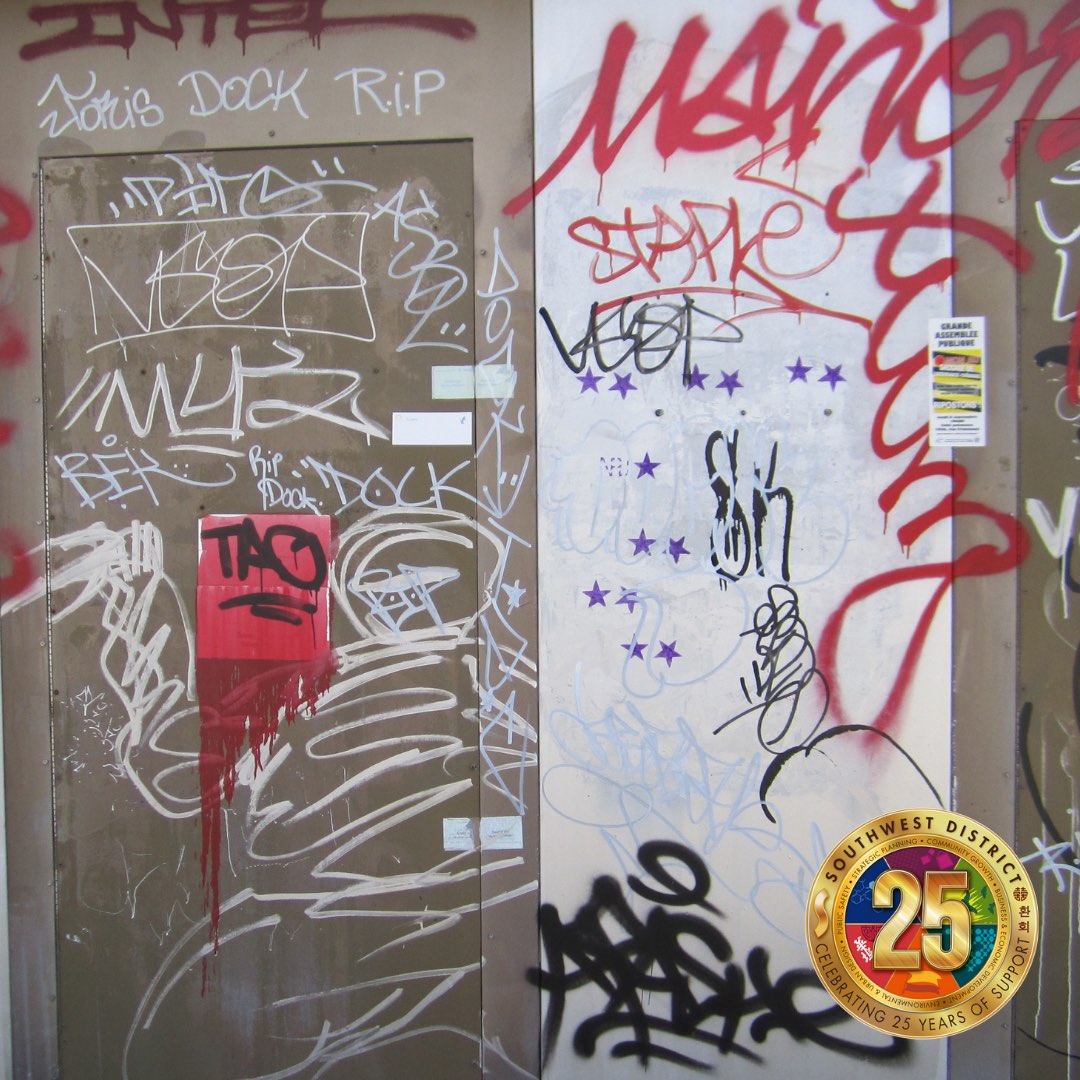
Gang graffiti is more than just spray-painted words and symbols on walls. It can be an active form of communication among rival groups, marking territories, sending challenges, and fueling tensions that often lead to more serious criminal activity. The Houston Police Department’s (HPD) South Gessner Division—led by Captain Lee Donovan—works closely with the Southwest Management District and residents to combat this issue before it escalates.
Recognizing the Impact of Untouched Graffiti
“Leaving graffiti untouched sends a message that nobody cares,” says Captain Donovan. “And that’s exactly what criminals look for—places where they can assert dominance without fear of consequences.” When graffiti is allowed to remain, it signals neglect to both community members and those engaged in illegal activities, potentially inviting further vandalism and crime.
Applying CPTED Principles
Donovan suggests a proactive approach known as Crime Prevention Through Environmental Design (CPTED). This strategy encourages property owners and businesses to maintain well-lit areas, install security cameras, and remove graffiti the moment it appears. Early removal is critical. When vandals see that their tags are quickly covered, they are less inclined to return and re-graffiti the same spot.
Rapid Cleanup Through Graffiti Abatement
Prompt cleanup is made easier through partnerships with the Southwest Management District’s Graffiti Abatement program. Several apartment complexes, storefronts, and local businesses have embraced the program, reaching out the instant they discover markings on their property. The program helps coordinate cleanup crews, often at no cost to owners, ensuring that publicly visible areas and storefronts are restored to a pristine condition.
“Graffiti can make a neighborhood look neglected,” says Donovan. “When we clean it up, we show the community—and the people behind the graffiti—that we care about our surroundings. It sends a powerful signal that criminal activity won’t be tolerated.”
Community Outreach and Reporting
Community outreach also plays a key role in this effort. Local residents are encouraged to report fresh graffiti to either the Southwest Management District, the Houston Police Department, or directly through city hotlines. By making prompt reports, property owners can document incidents for law enforcement and insurance purposes, and abatement crews can act quickly to remove the markings.
Gang graffiti can be especially threatening because it often includes coded messages, symbols, or letters indicating affiliation. If left unaddressed, a single tag can invite a rival gang to “cross it out” or tag over it, causing an escalating cycle of vandalism and potentially leading to violent confrontations. The District’s multi-pronged strategy—rapid cleanup, community vigilance, and law enforcement collaboration—helps keep these territorial disputes from gaining momentum.
Education and Awareness
Another effective tactic is education. Through workshops and forums, local officers, business owners, and residents learn how to recognize gang symbols and understand why certain letters or numbers matter. This knowledge encourages the entire community to spot emerging issues, document them, and inform the police. Such awareness is often the first step toward preventing more serious crimes down the line.
The Power of Partnership
Captain Donovan emphasizes that sustaining these efforts hinges on close partnerships. While the police can investigate suspects and conduct patrols, ongoing support from property managers, business owners, and residents is what keeps graffiti from taking root. “When residents and businesses stand together,” he says, “we send a clear message that our neighborhoods are not open to criminal elements.”
The Southwest Management District provides a graffiti abatement program that tackles graffiti in the district. To report graffiti in public spaces, contact district staff at info@southwestmanagementdistrict.org.






